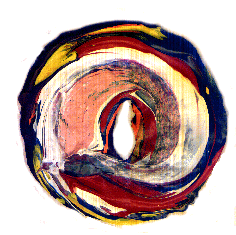

Introduction
The philosophical thought known as normalism or differential
ontology addresses the issue of how the world means. The effort to
resolve ontological questions of the nature of things leads to a
consideration of the concept of generality. The concept of generality,
in turn, is explicated through the idea of time--a concept 'normal' to
being, and so capable of providing the perspective of meaning. Time
signifies through futurity, 'the image of generality,' logically
representable as the set of all (possible) worlds.
That the future is the set of all possible worlds implies two principles
characterizing time. The first was stated by Hume, the consequence
of his critique of causality, that anything can happen next.
Induction cannot guarantee that the future will resemble the past.
Our experience cannot insure its uniformity into the future. Futurity
is representable as a one-to-one mapping W = F(w(i)), with i =
aleph(n(j)), and probability function P(W) = 1/ sum aleph(N(i))! = 0.
Non-psychologically, the future is strictly non-anticipatible.
The second principle summarizes the ontological implications of
futures. Veridical status is contingent on futurity. What something
becomes decides what it was, and is--decides whether it was
anything at all, or only a Shakespearean reverie. The issue is
sequence. The function S = L(k), where L = f(n), n<q, and f(q) /=
f(n+1) for integer n, is discontinuous at q. A rule (concept) requires
reformulating L. The concept changes.
A conspicuous discontinuity is death. Within the logical space W,
cessation is divergence. The 'angle' of divergence is a measure of
conceptual lability. We may say: What matters is who wins, but the
game is not over. We cannot be sure of the score. We may be far
ahead, and have no idea. Regardless of what we think, and what we
imagine counts as evidence against us.
Ontological discontinuities are capable of binary representation as
continuance (a) and cessation (b). Angle of divergence can be given
as the vector (a,b). We cognize the object as the intersection of
predicate sets, mapping as parameters. Disjunction is change; {} is
cessation. The object can change in whole or in part. We may die, or
transfigure. Choice is indeterminate in W. W is Eden.
The Disjunction of Parts
Consider sequences of subsets of {a(j),b(k)}, where a and b are
conjoint properties. Change is representable as deviation from any
recognizable pattern or rule, however intuited, including (a,b).
Nearest neighbor functions give identity, and the granularity of
change.
![]()